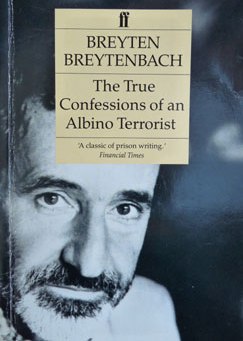Arts and culture
South African literature: the 1960s
Alex la Guma
Among them was Alex la Guma, a Marxist and African National Congress (ANC) leader who saw the purpose of his work as the exposure of the dreadful conditions of South Africa’s oppressed. His novella A Walk in the Night (1962) shows the life of crime to which slum inhabitants are driven, and And a Threefold Cord (1967) contrasts the existence of a black worker in a white home with her employers’ affluent life. The later novel, In the Fog of the Season’s End (1972), possibly his best, shows the developing consciousness of a man dedicated to the underground struggle for freedom. As a "listed person", little of La Guma’s work was available in South Africa until 1990, when the liberation movements were unbanned. At the same time, in the 1960s, the Afrikaans literary scene had a rush of new blood, as literary writers such as Jan Rabie, Etienne Leroux, Breyten Breytenbach and Andre Brink emerged. Publishing first in Afrikaans, these writers were increasingly politicised by the situation in South Africa and their contrasting experiences overseas.Breyten Breytenbach
Breytenbach, who began as one of the most linguistically radical new poets in Afrikaans, left South Africa for France in 1960, where he became a vocal critic of the apartheid state. Later, in the 1970s, he returned to South Africa and was arrested and jailed for work he was doing for the liberation movement. From this experience came his extraordinary prison memoir, True Confessions of an Albino Terrorist (1996). His prison poetry was published in English in Judas Eye (1988). Breytenbach’s return visits to South Africa are recorded, mixing reportage and imaginative commentary, in A Season in Paradise (1976) and Return to Paradise (1993). His essays have been published in The Memory of Birds in Times of Revolution (1996). Even under an ANC government, as he was under a Nationalist one, Breytenbach remains caustic about politics and power.Andre Brink
Andre Brink stayed in South Africa to see his novels become the first Afrikaans works banned by the government. Written in English as well as Afrikaans, his novels have become as important a part of South African English-language literature as they are in Afrikaans. Having published several novels in Afrikaans during the 1960s, it was his novel Looking on Darkness (1973) that was first banned. His immensely powerful novel A Dry White Season (1982), focused on the death in detention of a black activist, and caused great irritation to the apartheid state, while conscientising many white South Africans. It was also banned, then unbanned. Later novels by this prolific novelist include An Act of Terror (1991), dealing with an Afrikaner dissident turned "terrorist", and On the Contrary (1993), a playful reworking of South Africa’s colonial history.Bessie Head
During this period, Bessie Head emerged as a leading South African woman writer. Of mixed blood, and with a traumatic family history, Head left South Africa to avoid its racial policies and lived in Botswana, where she felt more at ease. Her novels show a marked sympathy with ordinary peasant women; her heroines are poor but strong-willed, women who have to face up to various forms of prejudice. Her first novel was When Rain Clouds Gather (1968), followed by Maru (1971), The Collector of Treasures (1977), and A Question of Power (1973). The Collector of Treasures is her most autobiographical work, dealing with the traumas of her own illegitimate mixed-race birth, her mother’s suicide and her own nervous breakdown.Wilbur Smith
Another writer to make his name in the 1960s was Wilbur Smith, South Africa’s worldwide best-selling author. In many ways he is the heir to the tradition of Rider Haggard - some would say politically as well. His earliest novels are probably his best: Where the Lion Feeds (1964) and The Sound of Thunder (1966) are set in the era of the foundation of gold mining in South Africa. Others go as far afield as the state of Israel, Ethiopia during the Italian invasion, piracy in the age of sail, or, more recently, investigate the pharaonic times of Ancient Egypt. The Quest (2007) was a New York Times’s best seller as well as a best seller in several European countries.A new generation of poets
The 1960s also saw the emergence of a new generation of white South African poets, among them Douglas Livingstone, Sidney Clouts, Ruth Miller, Lionel Abrahams and Stephen Gray. Their work ranges from powerful apprehensions of natural life (Livingstone) to more interior, meditative considerations (Abrahams) and a sardonic socio-political sensibility (Gray). Gray has also written novels, plays and much criticism. Abrahams has written two semi-autobiographical novels, The Celibacy of Felix Greenspan (1977) and The White Life of Felix Greenspan (2002).The story continued ...
Would you like to use this article in your publication or on your website? See: Using SAinfo material

Breyten Breytenbach was jailed by the apartheid authorities in the 1970s for working for South Africa's liberation movement. His extraordinary prison memoir was published in 1996


